How to: Stream Kodi To Chromecast from Android, PC or MAC
Even if you’re not a big fan of Google, you have to acknowledge that Chromecast is one of the best streaming kits out there. You can simply plug in the Micro USB end in the back of your TV and enjoy 4k streaming and HEVC content. If you compare the features of Chromecast with most of the competition, there’s only one clear winner. Most of the alternatives offer the same capabilities as Chromecast for double the price.
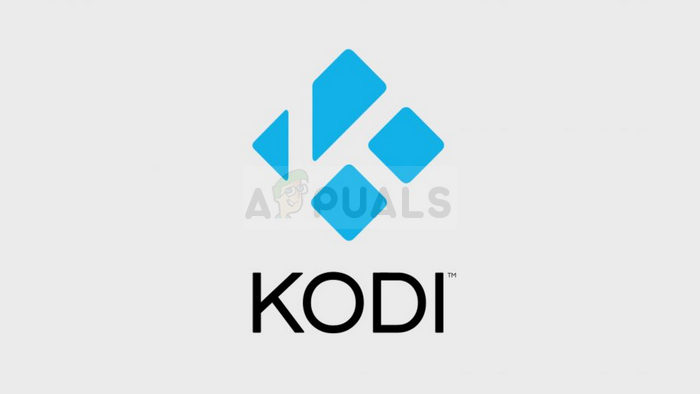
Kodi had a meteoric growth from the fairly anonymous XBMC to an immensely popular piece of software used by millions. Kodi excels at any type of HTPC setup and will allow you to organize your media exactly how you want it. Behind it, there’s a huge community that keeps the project alive and kicking. There are also some legal concerns about Kodi, but that isn’t the point of this article.
At this point, you might be wondering why I’m speaking so highly of the two pieces of technology. Well, the reason is, you can combine them in a way that allows you to stream Kodi on any Chromecast-compatible device. Even though Kodi is not compatible with Chromecast by default, there are ways to make them play nice with each other.
Below you have a whole suite of methods that will allow you to stream Kodi to Chromecast from Android PC, Mac, and Linux. Depending on your setup, pick the appropriate guide for your situation.
Streaming Kodi from Android
When it comes to Android, there are three ways to stream Kodi on Chromecast. The first two methods that we are going to feature are extremely easy but will consume a lot of your Android’s battery life and limit your Android’s functionality while streaming to Chromecast.
The third method has a more complex initial set up that will require you to get your hands dirty. But on the plus side, it’s way kinder to your Android battery life than the first two. Even more, it will also allow you to perform other chores while Kodi runs in the background.
Even though all the methods above are working just fine, we recommend Method 3 and Method 4 for the best result.
Method 1: Streaming Using Quick Settings Icon
Now, this method might or might not work for you. It all depends on the Android version that you’re using. Even though the Cast function is normally included in the stock Android builds, some manufacturers still don’t include this feature on their smartphones.
On most Android builds, you should be able to find the Cast button in the Quick Settings drawer. Here’s what you need to do:
Note: If you can’t complete the steps below, jump to Method 2.
- Swipe down from the top of the status bar to pull down the Quick Settings drawer.
- If you don’t see the Cast icon right away, tap on the pencil icon. This will bring up even more quick options.
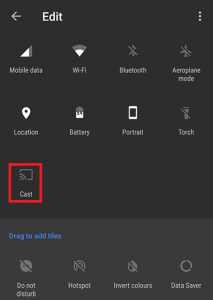
Use Cast in Device’s Settings - Tap the Cast icon and wait for your device to scan the network. After a while, you should see a list of available devices. Select your Chromecast device from the list. You will know you’ve successfully connected when your Android screen is mirrored on your TV.
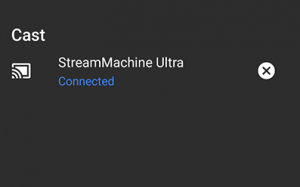
Select Your Chromecast Device - Open the Kodi app and play a video.
Since this will cast the whole Android to your Tv, it will prevent you from using your phone while streaming to Chromecast. If you’re looking for a better option, move to Method 3.
Method 2: Streaming Using Google Home App
If you don’t want to waste a lot of time, this is certainly the method for you. We will use a Google Home feature to mirror the screen of your Android to the Chromecast dongle.
Although there’s the advantage of accessibility, there are some limitations to this method. First of all, the content you watch will be played on both devices. Also, you won’t be able to turn your android screen off, send texts or take calls while casting to Chromecast. If you want a quick and easy solution, follow the steps below:
- Start by installing Kodi on your Android device. I highly recommend that you avoid custom builds and stick with the official Google Play app.
- Install the official Google Home app from the Google Play Store.
- Once both apps are installed, open Google Home and tap on the action menu. From there, tap on Cast screen/audio.
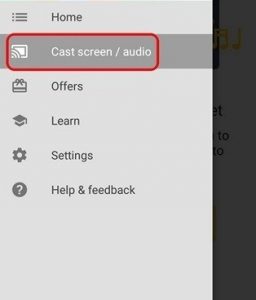
Open Cast Screen/Audio in Google Home App - Tap on Cast Screen / Audio once again.
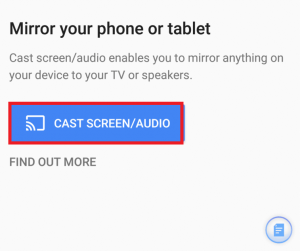
Tap on Cast Screen/Audio - Now the app will search for compatible devices. Select your Chromecast device from the list and hit Ok.
Note: Don’t worry if you get the message saying “Screencasting is not optimized for this device“. It’s a common occurrence.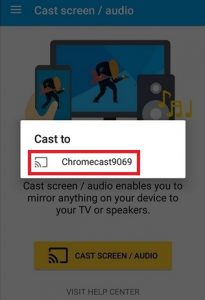
Select Your Chromecast Device - Now open the Kodi app on your Android and begin streaming the video you want to cast on your TV.
That’s how you stream Kodi to Chromecast via the Google Home app. Even if it’s such an accessible solution, there are some severe limitations. There’s also a possibility that you might experience some lag on your Chromecast while streaming via Google Home.
Method 3: Streaming While Kodi Runs in the Background
If you’re willing to go through the steps, this is by far the best method of streaming Kodi to Chromecast from Android. This will allow Kodi to continue playing on your Chromecast even when your phone is locked. This will use considerably fewer battery than the first two methods we have featured so far.
The process is quite long and tedious, but it’s well worth it. Follow the steps down below:
- Download and install Es File Explorer from Google Play Store.
- Install LocalCast from Google Play Store.
- Download the PlayerCoreFactory XML File.
- Make sure you have the Kodi app installed. To avoid unexpected errors, I suggest that you use the version listed on Google Play Store.
- Open ES File Explorer and go to Settings > Display Settings. Scroll down to the Others tab and tick the box next to Show hidden files.
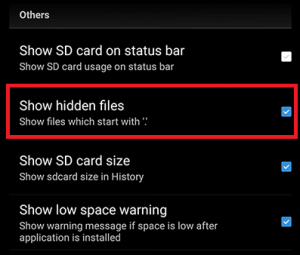
Show Hidden Files in ES File Explorer - Now go to the Downloads folder and copy the PlayCoreFactory.xml file that you’ve just downloaded.
- Now return to the home screen of Es File Explorer and choose Internal Storage.
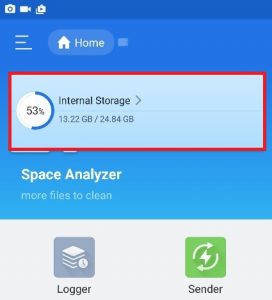
Tap on Internal Storage - Paste the PlayCoreFactory.xml file in Android > Data > org.xbmc.kodi > files >.kodi > userdata folder.
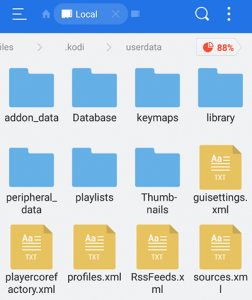
Open Kodi Userdata Folder - Open the Kodi app and play any video you like. If you have multiple casting apps installed, it will ask you to choose a service. In that case, choose LocalCast.
Note: If you don’t have another casting app installed, Kodi will automatically choose LocalCast. - Now select your Chromecast device and wait for the connection to be initiated.
- Tap on Play to begin the video playback on your Chromecast device. You can add multiple videos by using the Add to Queue button.
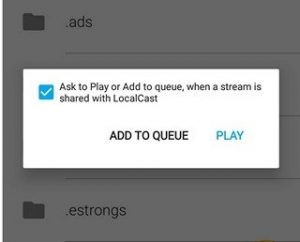
Tap Play - Once you reach this step, you can minimize the Local Cast app and even lock your Android device. The video playback will continue until you tap on the Exit App on TV or Disconnect.
Streaming Kodi From PC or MAC
The following method works just as well on both PC and MAC. It’s a Chrome feature that is currently built into the latest PC and MAC Chrome versions. If you don’t like Chrome, you can also perform the following steps on Vivaldi or any other chromium-based web browser.
Method 4: Casting Kodi to Chromecast From A PC or MAC
Keep in mind that older Chrome versions won’t have this feature by default. If you want to enable the casting function on older Chrome versions, you need to download the Cast extension.
With this in mind, here’s what you need to to to cast Kodi from PC or MAC to ChromeCast:
- If you see the cast icon in the top right corner of the screen, click on it.
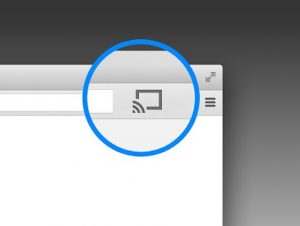
Click on Cast Icon Note: If you don’t see the cast icon, tap the action button and click on Cast…
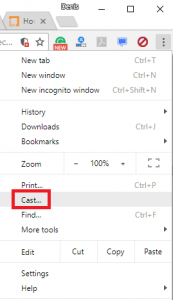
Click on Cast in Action Menu - Click on the Cast icon and make sure Cast Desktop is selected.
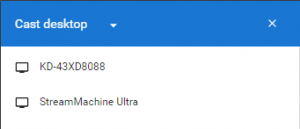
Select Cast Desktop - Choose your Chromecast and wait for the connection to be initiated.
- Open Kodi and play any video, but make sure to avoid closing Chrome while the casting is happening.